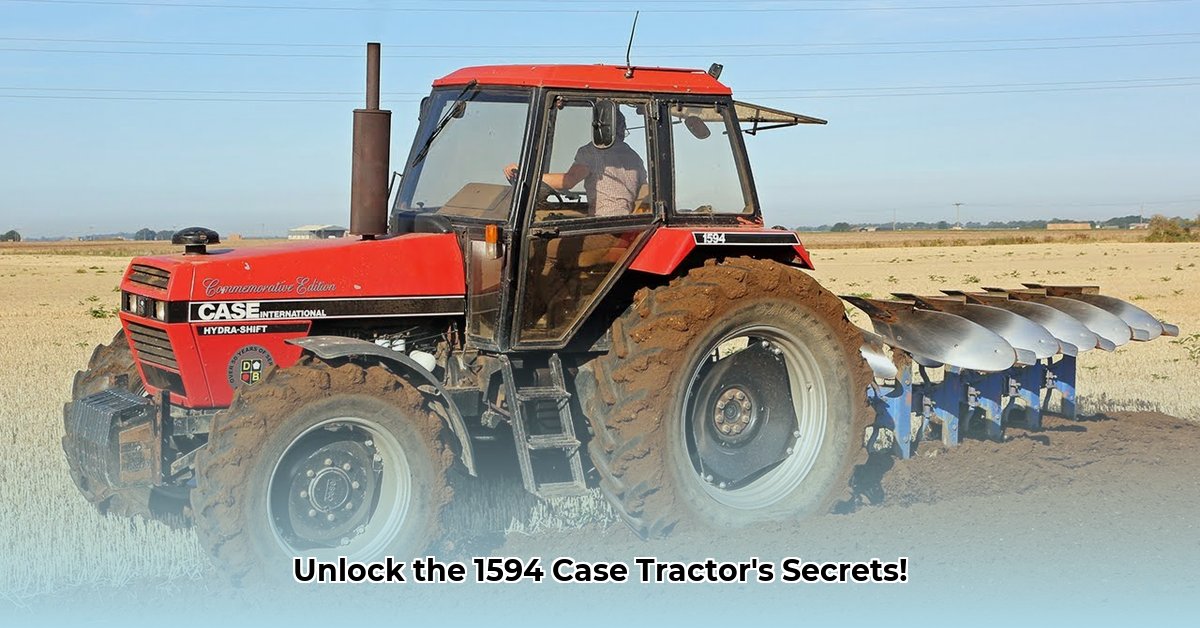
The Case IH 1594, manufactured from 1985 to 1988, represents a sturdy workhorse of its era. This comprehensive guide serves prospective buyers, collectors, and mechanics alike, offering a detailed overview of this classic tractor, including its technical specifications, historical context, potential maintenance challenges, and practical advice for ownership and restoration. For more visual information, check out these Case IH tractor pictures.
Technical Specifications and Historical Context
The Case IH 1594 was a mid-range tractor offering robust power and capabilities for diverse farm tasks. Its engine, PTO (power take-off), and hydraulic systems were designed for dependability. Original pricing, approximately $26,000 in 1988 (adjusted for inflation), reflects its positioning as a significant investment for farmers. While lacking the advanced electronics of its more modern counterparts, its straightforward design emphasized reliability and ease of maintenance.
Compared to contemporaries like John Deere and Ford models, the 1594 offered competitive horsepower and PTO capabilities. However, it may have lacked some of the comfort and technological refinements found in rival machines. This reflects the technological norms of its time—simplicity and robust engineering were prioritized over cutting-edge features. (Note: Specific engine specifications and PTO horsepower will vary and should be verified with owner's manuals or TractorData.com).
Reliability and Maintenance: A Realistic Assessment
Comprehensive long-term reliability data for the 1594 is scarce. Online forums like RedPowerMagazine reveal common maintenance concerns. However, the biggest challenge is parts availability. This necessitates a multi-faceted approach to sourcing components:
- Authorized Dealers: Check Case IH dealer networks, although success may be limited.
- Aftermarket Suppliers: Several companies offer aftermarket parts for older tractors. Thorough research to ensure quality is crucial.
- Online Marketplaces (e.g., eBay): These often offer used and occasionally new parts.
- Salvage Yards: Often the best source for hard-to-find components, but may require more searching.
- Specialized Forums and Communities: Connecting with fellow 1594 owners provides insights and part leads.
Potential risks associated with 1594 ownership include:
| Risk Factor | Likelihood | Impact | Mitigation Strategy |
|---|---|---|---|
| Parts Availability | Very Likely | High | Proactive sourcing via multiple channels; preventative maintenance |
| Major Repairs | Moderately Likely | High | Thorough pre-purchase inspection; budgeting for unexpected repair costs |
| Electrical Issues | Moderately Likely | Medium | Regular inspection and maintenance; consultation with an experienced mechanic |
Buyer's Guide: Making an Informed Decision
Purchasing a used 1594 demands careful due diligence. A pre-purchase inspection by a mechanic experienced with vintage tractors is highly recommended. Assess the overall condition, scrutinizing both the mechanical and electrical systems. The potential cost of repairs, compounded by parts sourcing challenges, should be considered alongside the purchase price. Don't hesitate to walk away if any concerns arise.
Restoration and Collection: Preserving a Legacy
Restoring a 1594 is a demanding yet rewarding project. Collectors prioritize maintaining originality. Detailed documentation of the restoration process is critical. Networking with other enthusiasts is essential for exchanging knowledge and locating rare parts. This process will also require specialized skills and might necessitate 3D printing of specific parts.
Conclusion: Weighing the Rewards and Challenges
The Case IH 1594 offers a unique blend of classic charm and modern-day challenges. While the tractor's robust design and historical significance are alluring, potential owners must acknowledge the realities of parts availability and potential repair costs. With careful planning, thorough inspection, and a proactive approach to maintenance, owning a 1594 can be a highly rewarding experience, preserving a piece of agricultural history. However, only those prepared for the unique challenges associated with maintaining a vintage machine should proceed.